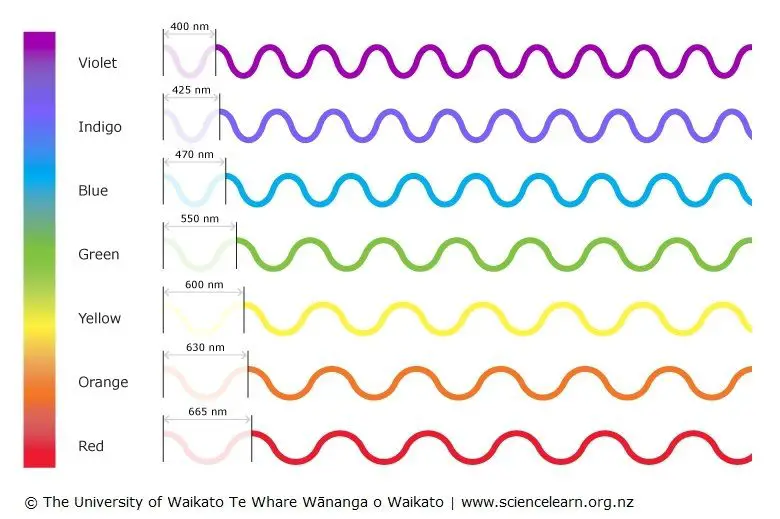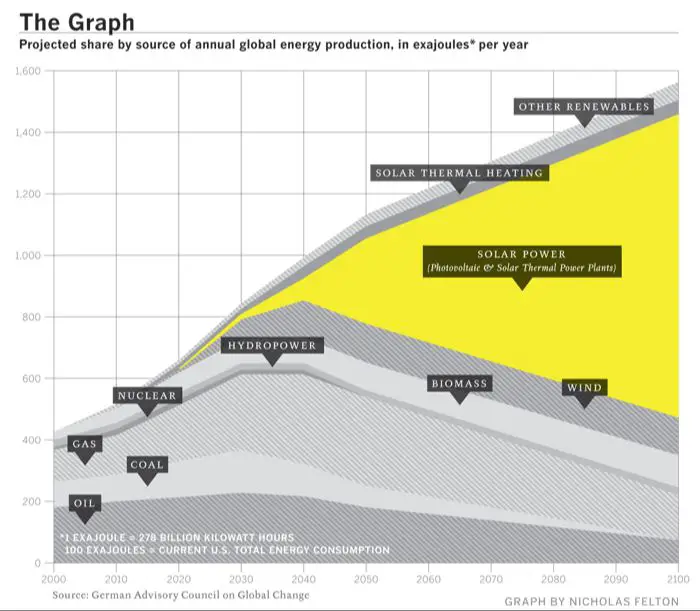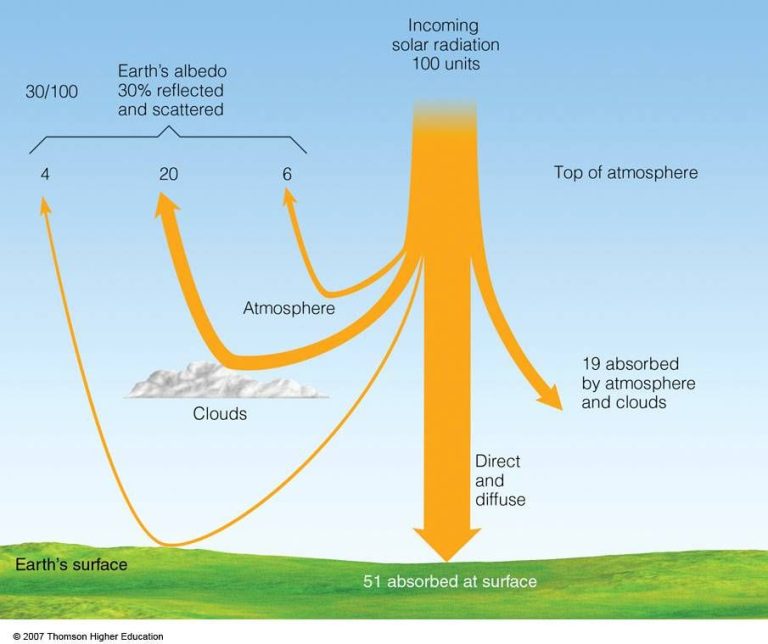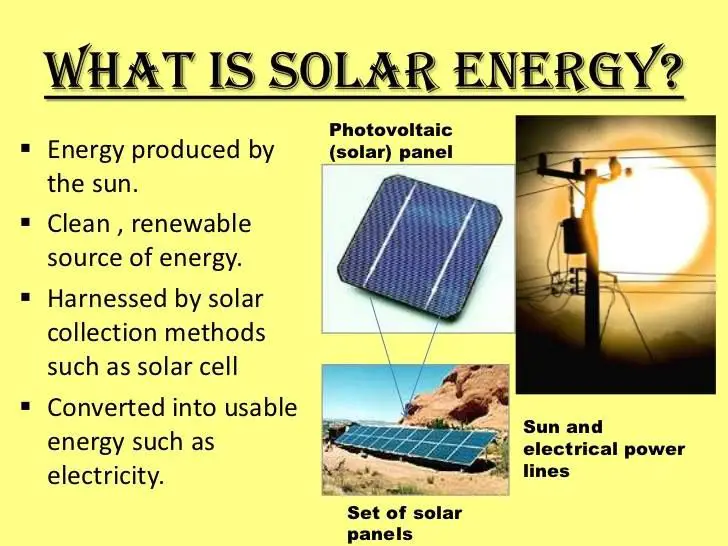Is Solar Radiation And Light The Same?
Defining Solar Radiation
Solar radiation is electromagnetic radiation emitted by the sun. According to ambientweather.com, solar radiation “is radiant energy emitted by the sun from a nuclear fusion reaction that creates electromagnetic energy. The spectrum of solar radiation is classified according to its wavelength range.” Source. In other words, solar radiation consists of the full spectrum of electromagnetic waves emitted by the sun, including ultraviolet radiation, visible light, and infrared radiation.
The different types of solar radiation have different wavelengths and energy levels. But they all originate from the sun’s nuclear fusion reactions and travel to the Earth in the form of electromagnetic waves.
Defining Visible Light
Visible light is the portion of the electromagnetic spectrum that is visible to the human eye (ThoughtCo, 2022). Visible light consists of wavelengths from approximately 380 to 750 nanometers (Study.com, n.d.). Humans are able to see light with wavelengths ranging from approximately 700 nm (corresponding to red) to 400 nm (corresponding to violet) (PCMag, n.d.).
Visible light makes up a small portion of the full electromagnetic spectrum, which encompasses radio waves, microwaves, infrared radiation, visible light, ultraviolet radiation, X-rays and gamma rays. Visible light sits between infrared and ultraviolet radiation on the electromagnetic spectrum.
When light in the visible spectrum falls on materials, the light can be reflected, absorbed or pass through the material. The wavelengths that are reflected determine the color we perceive that object to be.
Comparing Wavelengths
Solar radiation covers the entire electromagnetic spectrum, ranging from radio waves and microwaves on the long wavelength end, to X-rays and gamma rays on the short wavelength end. Visible light, as its name suggests, only includes the wavelengths of light that are visible to the human eye.
The visible light portion of the electromagnetic spectrum ranges in wavelength from about 380 nanometers (violet) to about 740 nanometers (red). This is only a very small sliver of the full electromagnetic spectrum, which encompasses wavelengths from less than a nanometer to over a kilometer.
So while solar radiation includes visible light, it also contains many other types of radiation that our eyes cannot see, such as ultraviolet radiation, infrared radiation, and more. Visible light is just one component of the broad spectrum of electromagnetic radiation given off by the Sun.
Comparing Energy Levels
Solar radiation contains higher energy ultraviolet (UV) rays, while visible light consists of lower frequency wavelengths. UV rays have shorter wavelengths and therefore higher frequencies and energy levels compared to visible light rays. According to the Solar Radiation and Climate Experiment (SORCE), ultraviolet radiation has wavelengths between 10 to 400 nanometers, which gives it more energy than visible light that ranges from 400 to 700 nanometers (NASA). The higher energy UV rays can damage cells and cause health effects, while visible light provides illumination but is less energetic. This difference in energy levels is due to the inverse relationship between wavelength and frequency – shorter wavelength means higher frequency, which results in higher photon energy levels. So even though UV rays and visible light both originate from the sun, their energy levels differ substantially due to their wavelengths.
Other Differences
While solar radiation and visible light share some similarities, there are also some key differences between them:
Solar radiation covers the full electromagnetic spectrum emitted by the sun, including ultraviolet, visible light, and infrared radiation. Visible light, on the other hand, only includes the narrow band of wavelengths that are visible to the human eye (400-700 nm).
Solar radiation contains radiation with higher energy and shorter wavelengths, like ultraviolet, X-rays and gamma rays. Visible light has lower energy photons with longer wavelengths.
Solar radiation travels in a straight line from the sun. Visible light can be refracted, reflected, scattered or absorbed as it passes through the atmosphere and interacts with objects.
Solar radiation provides the energy that drives processes like photosynthesis and heating of the land and oceans. Visible light allows organisms to see but does not provide significant heating or energy transfer.
The full spectrum of solar radiation is hazardous in large doses, but visible light is generally not harmful (except at extreme intensities). Solar radiation can cause sunburn, skin cancer, and eye damage, while visible light does not cause such effects.
Similarities Between Solar Radiation and Visible Light
While solar radiation and visible light have some key differences, they also share some important similarities. Visible light is actually part of the solar radiation spectrum. The wavelengths of visible light fall within the wider range of wavelengths that make up solar radiation. Specifically, visible light wavelengths range from 380 to 700 nanometers, while solar radiation spans a broader range of 100 to 1,200 nanometers. So there is an overlap where both solar radiation and visible light exist within the 380 to 700 nanometer wavelengths.
Both solar radiation and visible light consist of photons traveling in waves. These photons carry energy that can be transferred to matter on Earth. Solar radiation and visible light also originate from the same source – the Sun. The fusion reactions within the Sun’s core produce photons across a broad spectrum, including visible wavelengths. So visible light is one component of the Sun’s total energy output.
In summary, visible light is a subset of solar radiation that exists within a shared wavelength range. Both consist of photons emitted by the Sun, carrying energy that interacts with Earth’s atmosphere and surface.
Source: The Sun’s Energy: An Essential Part of the Earth System
Everyday Examples
We experience both solar radiation and visible light in our everyday lives. For example, when we get a sunburn, we are experiencing exposure to ultraviolet radiation, which is part of the solar radiation spectrum. Plants and trees use the visible light from the sun for photosynthesis. Solar panels convert solar radiation into electricity that powers homes and businesses. Greenhouses use solar radiation to keep plants warm and help them grow. Solar ovens and solar water heaters rely on infrared radiation from the sun to cook food and heat water.

When we see rainbows, we are seeing the different wavelengths that make up visible sunlight. Light-sensitive sunglasses help protect our eyes by filtering out harmful ultraviolet and infrared radiation. In the morning, we wake up to the visible light rays entering our windows. At night, we turn on lamps that emit visible light so we can see indoors when it’s dark outside.
Effects on Earth
Solar radiation and visible light have different effects on Earth’s systems. Solar radiation encompasses the full spectrum of electromagnetic radiation emitted by the Sun, including ultraviolet, visible, and infrared radiation. In contrast, visible light is only the portion of sunlight that is visible to the human eye.
Solar radiation impacts Earth’s climate system and is the primary source of energy that drives atmospheric and oceanic circulation. Ultraviolet radiation can damage DNA and cause health effects like sunburn and skin cancer. Infrared radiation is absorbed by the Earth’s surface and atmosphere, heating the planet. Visible sunlight powers photosynthesis in plants and phytoplankton.
Specifically, ultraviolet radiation can damage terrestrial and aquatic ecosystems. Infrared radiation is responsible for warming Earth’s surface. Visible light wavelengths drive photosynthesis which is vital for plant growth and the marine food web (Fondriest).
Furthermore, the amount of solar radiation reaching Earth’s surface depends on latitude, time of day, and atmospheric conditions. In contrast, visible light penetration in water depends on variables like turbidity, water depth, and phytoplankton. Overall, solar radiation spans a broader spectrum and has wider ranging effects on Earth’s systems compared to visible light alone.
Summary
In summary, while solar radiation and visible light are related, they are not the same. Solar radiation encompasses the full spectrum of electromagnetic radiation given off by the sun, including ultraviolet rays, visible light, and infrared rays. Visible light, on the other hand, is just one portion of the electromagnetic spectrum that humans can see with their eyes. It occupies a narrow band of wavelengths from approximately 380 to 750 nanometers.
Some key differences between solar radiation and visible light are their wavelengths and energy levels. Solar radiation spans a broad spectrum of wavelengths with energy levels ranging from over 10 electronvolts (eV) for X-rays down to below 1 eV for radio waves. Visible light sits in the mid-range, between approximately 1.6 – 3.2 eV. Additionally, solar radiation contains dangerous ionizing radiation like gamma rays and X-rays, while visible light is non-ionizing.
While they differ in many respects, solar radiation and visible light do have some similarities. Most importantly, visible light originates from the sun. The visible portion of the electromagnetic spectrum consists of the light emitted by the sun that humans can see with their eyes. Both solar radiation and visible light affect life on Earth, providing the energy that powers photosynthesis in plants and enables vision in animals. Understanding their differences as well as similarities allows us to harness their powers safely and effectively.
References
Fondriest Environmental. “Solar Radiation & Photosynthetically Active Radiation.” Fondriest Environmental, Inc. Environmental Measurements, 13 Nov. 2013, www.fondriest.com/environmental-measurements/parameters/weather/photosynthetically-active-radiation/.
“Sunlight.” Wikipedia, Wikimedia Foundation, 11 Feb. 2023, en.wikipedia.org/wiki/Sunlight.
“Solar Radiation – an Overview.” ScienceDirect, www.sciencedirect.com/topics/chemistry/solar-radiation.






